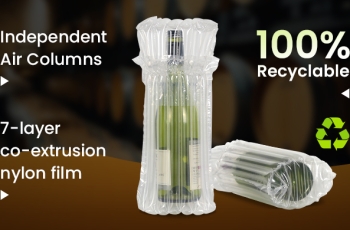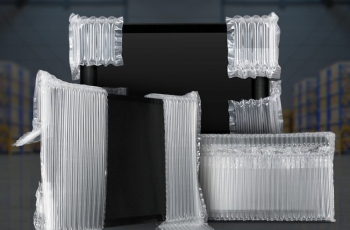Air Pillow Packaging: Versatile Packing Solutions for Your Products
Are you searching for reliable and effective packaging options to protect your products during transit? UniteLand Packaging is here to introduce you to our excellent bubble cushion products. We offer three main types of air pillow cushions: conventional, biodegradable, and kraft paper bubble cushions. Let’s explore their materials, specifications, and features to help you make the best choice for your packaging needs. The Classic Protector: Regular Air Pillow Packaging Material: Crafted from durable, virgin or recycled how-density polyethylene (HDPE) plastic film. Specifications: Available in a vast array! Think various air pillow sizes (common width:20cm*6cm, 20cm*10cm, 20cm*12cm, 20cm*20cm). Different gauges (film thickness) offer varying levels of cushioning strength. Anti-static options are also common. Features & Why You’ll Love It: Unmatched Durability & Protection: The gold standard for shock absorption. Those air pockets excel at dissipating impact energy. Lightweight: Adds minimal weight to your shipment, keeping freight costs down. Cost-Effective: Generally the most economical option per unit volume. Versatile: Perfect for wrapping, void fill, surface protection – you name it. Long Shelf Life: Doesn’t degrade under normal storage conditions. Ideal For: Heavy items, high-value fragile goods, long-distance shipping, general-purpose protection where maximum durability is key, and cost-sensitive operations. .The Eco-Conscious Champion:Biodegradable Air Pillow Packaging Material & Construction. Our Biodegradable Air Pillow Packaging is a game-changer for eco-conscious brands. Made from PLA (polylactic acid) derived from corn starch or sugarcane, these pillows biodegrade within 3-6 months—no microplastics left behind! Specifications: Identical to Classic variants for seamless workflow integration. Why Choose It? Sustainability First: Align with consumer demand for green packaging (Most shoppers prioritize eco-friendly brands!). Performance: Offers comparable cushioning and protection to traditional bubble wrap – you don’t sacrifice safety for sustainability. Brand Storytelling: Promote your commitment to circularity with compostable packaging that turns into soil, not waste. Reduced Carbon Footprint: Plant-based feedstocks generally have a lower carbon footprint than…













